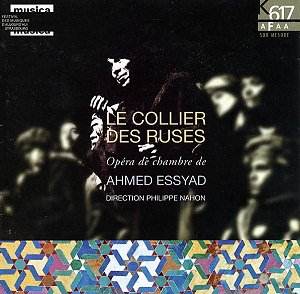 Composer: Fantasy
Composer: Fantasy
Works: Damhsaigh, Berçeuse de Gráinne pour Diarmait, Estro-Reel, Il Sonno, Ceol cuàine, Il Duello, A Cláirseach, Jig della Inquietudine, Eirin sonata, Bunch of rushes, Am cain, Mister Bethag and the Princess, La Ciacconna rossa
Performers: Le Orfanelle della Pietà (baroque ensemble), various Irish musicians (including Irish fiddle, Uilleann pipes, Irish bouzouki, Celtic harp, etc.)
Recording: Recorded in Italy in April 2001
Label: VIRGIN CLASSICS VC 545494-2
The confluence of Irish and Baroque music, while not unprecedented, finds a compelling expression in this recording by Fantasy. The project evokes a historical dialogue reminiscent of the 18th-century encounters between Turlough O’Carolan and Geminiani, bridging two rich musical traditions. This album invites listeners to explore a sonic landscape where the intricate ornamentation of Vivaldi’s melodies intertwines with the earthy, folkloric rhythms of Celtic music, creating a tapestry that is both innovative and respectful of its roots.
The execution of the works presents a fascinating juxtaposition of instrumentation and style. The baroque ensemble, Le Orfanelle della Pietà, is composed of a robust string section complemented by harpsichord, establishing a strong foundation for the dialogue with traditional Irish instruments. The Irish musicians, wielding everything from fiddles to Uilleann pipes, bring an authentic flavor to the proceedings, seamlessly transitioning between baroque and Celtic idioms. Moments of brisk jigs and reels emerge from the expected baroque textures, often catching the listener off guard, as the ensemble shifts from the stately gravitas of a concerto to the lively cadence of a traditional Irish dance.
Interpretatively, the recording navigates the delicate balance between fidelity to Vivaldi’s melodic lines and the improvisational spirit inherent in Celtic music. Notably, the choice of Vivaldi’s lesser-known works, such as themes from an oboe concerto and two movements from the B minor violin concerto RV 168, adds an air of discovery. These selections, unfamiliar yet resonant, allow the ensemble to showcase both the lyrical and rhythmic possibilities of Vivaldi’s music within a new context. The vocal contributions, while imbued with a certain melancholy, occasionally veer towards self-indulgence, which may detract from the overall dynamism of the instrumental pieces.
Sound quality and engineering merit commendation, with the recording capturing the nuanced timbres of both baroque and Irish instruments. The clarity of the strings, the airy quality of the flute, and the deep resonance of the Celtic harp are all distinctly articulated, enabling the listener to appreciate the intricate interplay between the two traditions. The mixing balances the vibrancy of the ensemble against the more subdued moments, ensuring that the energy of the jigs and reels does not overshadow the contemplative beauty of the slower movements.
This album does not simply aim to amalgamate two distinct musical genres but rather to foster a dialogue that respects and highlights their individual characteristics. While some may find the reflective passages overly somber, the overall arc of the recording culminates in a vibrant celebration of cultural exchange. The closing tracks, particularly, exhibit a sparkle and vivacity that leaves an uplifting impression, suggesting that this exploration of musical identities can indeed yield a joyful synthesis.
A rich and ambitious endeavor, this recording stands as a testament to the enduring vitality of both Vivaldi’s legacy and the Celtic tradition. It invites listeners to not only appreciate the beauty of each style but also to revel in the creativity that arises when they converse.



